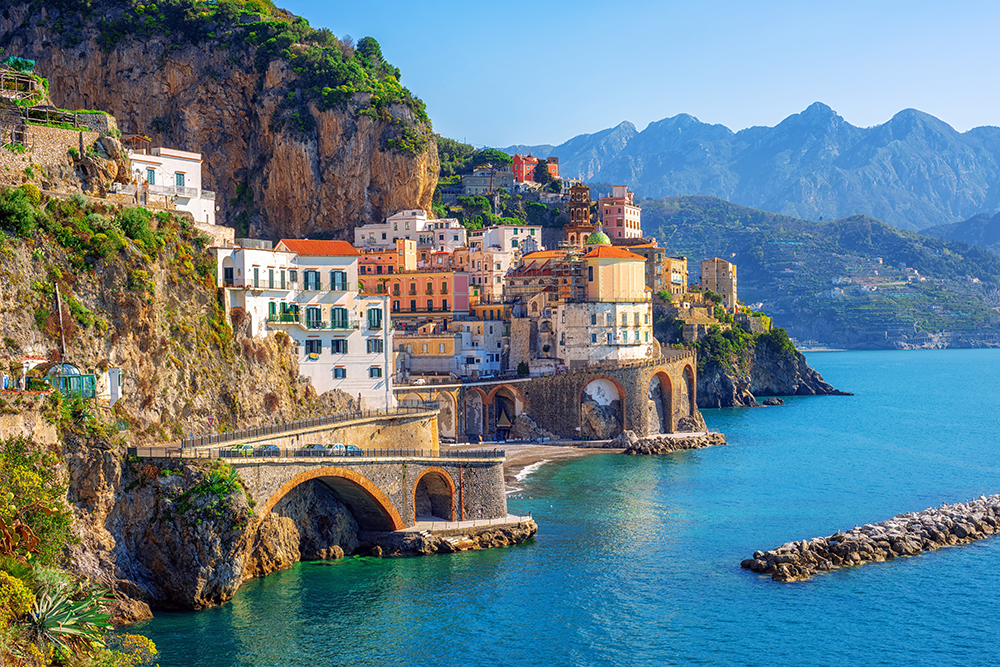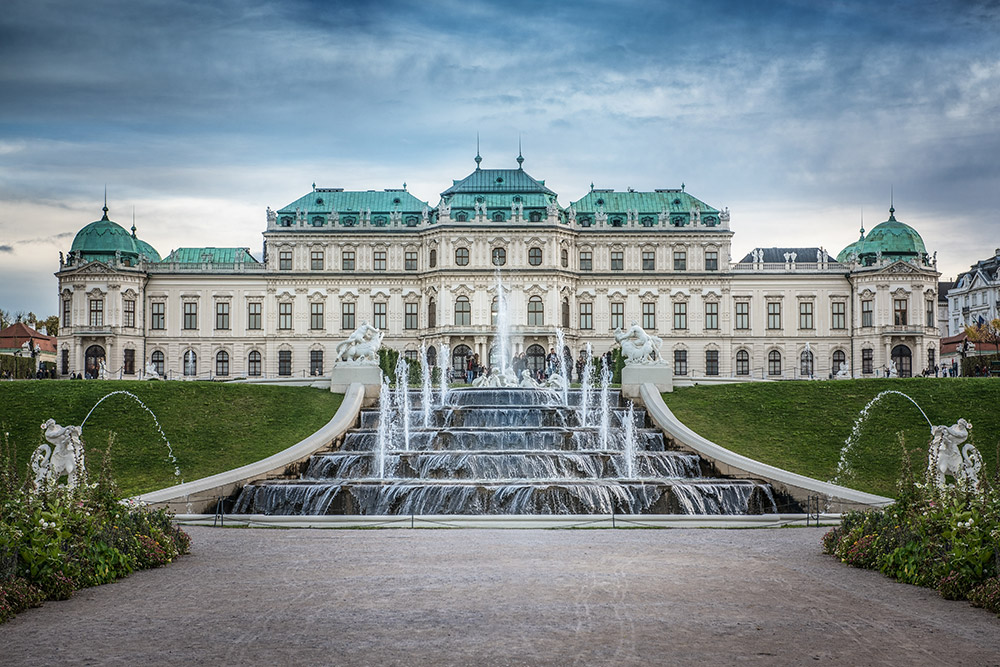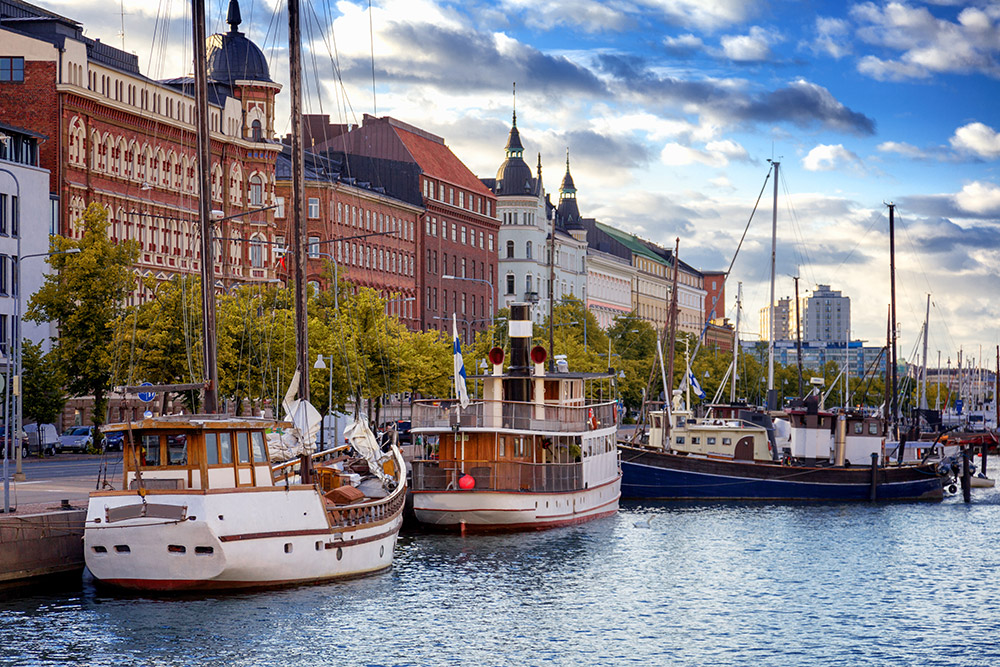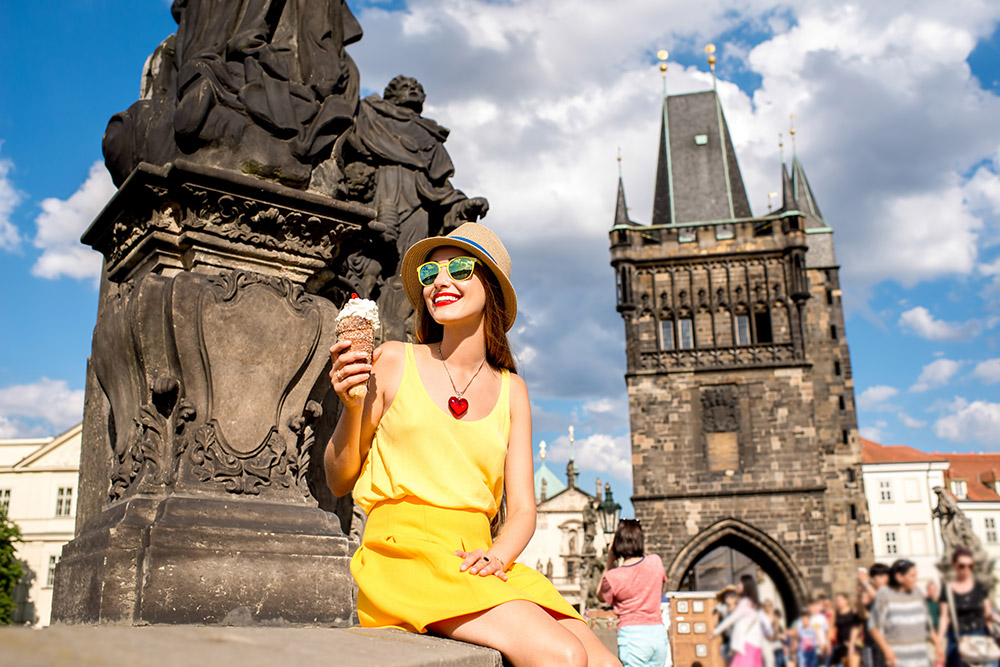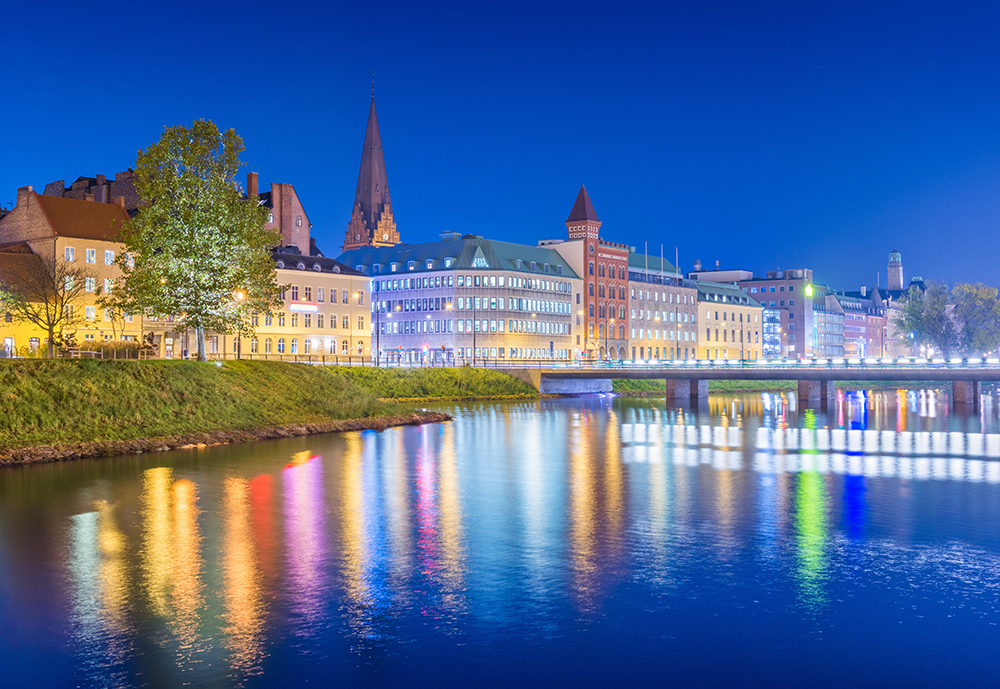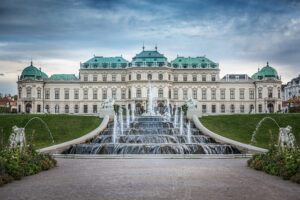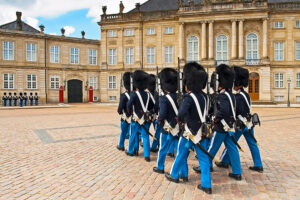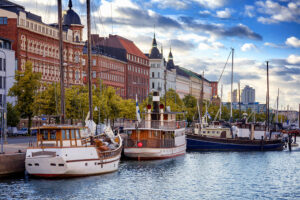This is a suggested 15-day art-focused itinerary to Italy, beginning in Naples and concluding in Milan, covering a distance of approximately 870 miles.
Popular itinerary for Exploring Italy with a Focus on Art:
Day 1: Naples
Naples is a renowned historical center and a UNESCO World Heritage site. Arriving from the sea, you’ll see the historic Castel dell’Ovo along the coast, a fortress offering beautiful views of the Gulf of Naples. It also serves as the starting and ending point for a walking tour in the historic center of Naples (Centro Storico). This area is a maze of narrow streets, historic churches, and vibrant markets. Visit Piazza del Plebiscito, the Royal Palace, and the Naples Cathedral. Dedicate two to three hours for the National Archaeological Museum, which boasts an impressive collection of Greek and Roman artifacts, including sculptures, mosaics, and treasures from the cities of Pompeii and Herculaneum, both destroyed by the eruption of Mount Vesuvius in 79 AD.
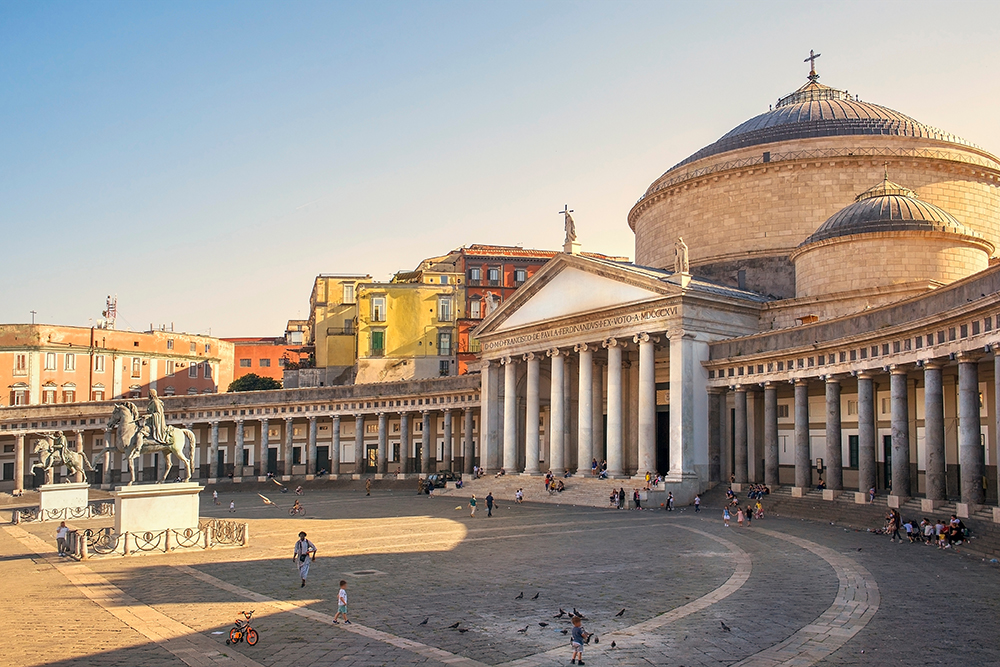
Explore the Capodimonte Royal Palace and Museum, known for its extensive and varied exhibits showcasing masterpieces by Italian and European artists. The collection includes paintings, sculptures, and decorative arts, with notable works from renowned artists like Titian, Raphael, Caravaggio, Botticelli, and Parmigianino. Set against a backdrop of picturesque surroundings, the palace itself is a cultural gem, offering visitors a comprehensive understanding of the evolution of Italian and European art.
Naples is also known for its delicious street food, so don’t miss out on the famous Neapolitan pizza, Sfogliatelle (a sweet pastry), and a variety of seafood dishes.
Spend the night in Naples.
Day 2: Pompeii and Sorrento
On your way to Sorrento, visit the historic city of Pompeii. Once a thriving Roman city and a center of commerce, culture, and industry, Pompeii faced a tragic fate when Mount Vesuvius erupted violently in 79 AD, covering it in a thick layer of volcanic ash. This catastrophic event resulted in the sudden destruction of the city and the tragic loss of thousands of lives. Pompeii remained buried and forgotten for nearly 1700 years, until its rediscovery in the mid-18th century. Excavations revealed a remarkably well preserved city, and today Pompeii is a vast archaeological site. Its streets, buildings, and even some remnants of its inhabitants and animals provide a detailed glimpse into the social, economic, and cultural life of the Roman Empire and of Pompeii’s residents. Pompeii’s wall paintings adorned its private houses, public buildings, and temples and cover a wide range of themes, including mythological scenes, landscapes, still life, and daily life, and the city’s frescoes display geometric, mythological, or depictions of animals. In the House of the Vettii, you’ll find the famous erotic frescoes depicting more intimate aspects of Roman life.
Sorrento is a short distance from Pompeii, and if you arrive in the evening, be sure to enjoy its renowned sunset, considered one of the most beautiful in the world. Wander through the historic town center, strolling along the charming streets that overlook the open sea. Sorrento’s marina, Marina Picolla, is located at the base of the city, providing access to the beaches of Capri Island.
Welcome to the Lemon Coast of Italy, where you can savor the renowned Limoncello liqueur and relish the distinctive flavors of the region.
Spend the night in Sorrento.
Day 3: Capri
Boats to Capri operate at various frequencies depending on the season. It is recommended to book in advance and take note of the schedules, especially for the return trip. Be sure to get an early start – there is a packed day ahead!
Upon reaching the marina, look for a boat or transfer to the legendary Blue Grotto (La Grotta Azzurra), known for its mesmerizing blue waters illuminated by the sun’s rays through the entrance. Check in advance whether sea conditions permit entry into the cave by rowboat – a magical experience. From there, ascend the winding road to the town of Anacapri. There, explore Villa San Michele, boasting a panoramic view of the Gulf of Naples. The villa’s beautiful gardens are adorned with Roman and Egyptian artifacts collected in the early 20th century by its original owner– Dr. Axel Munthe, a Swedish physician. Famous for his memoir, “The Story of San Michele,” in which he recounts his life, including his time on the island of Capri, the villa – now a museum- served as Munthe’s home, becoming a sanctuary for art and culture. Munthe had a particular interest in classical antiquity, and the villa reflects his eclectic taste, with a collection that includes both ancient and modern sculptures, antique furniture, and works of art.
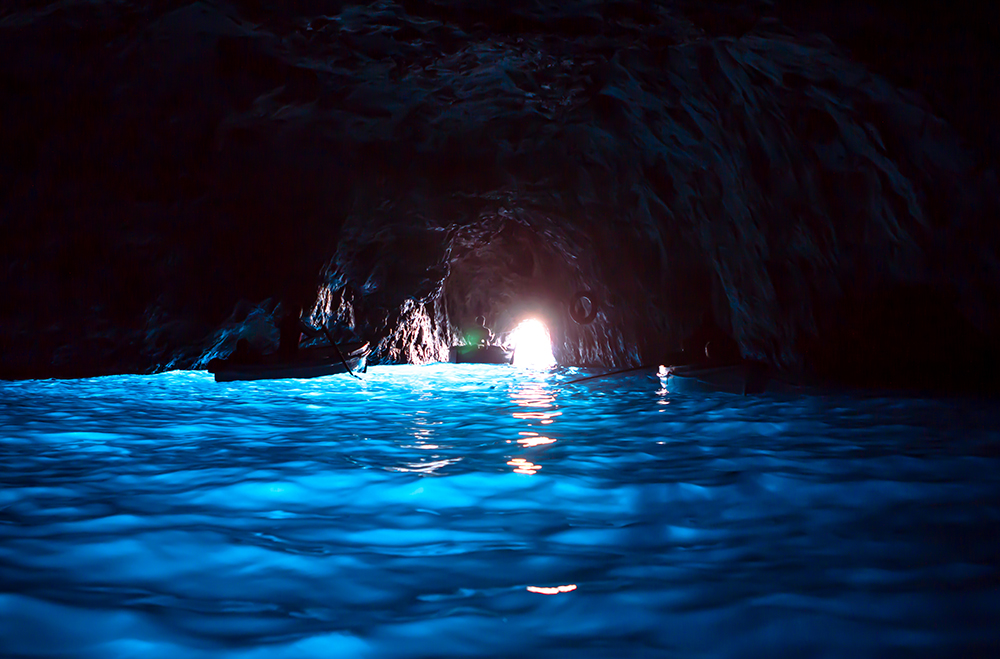
On one side of the town’s walking path, a two-seater cable car ascends to the mountain summit, providing stunning views of houses, orchards, and vineyards. The Monte Solaro viewpoint offers a breathtaking panorama. On the opposite side, the walking path leads to the entrance of the “Phoenician Steps,” 921 steps descending to Capri’s marina.
Spend the night in Sorrento.
Days 4 and 5: Rome
Rome, the capital of Italy, is a destination bursting with possibilities. From archaeological sites and historical landmarks to museums, markets, cultural venues, and leisure spots, experiencing its diverse attractions requires a minimum of two days. Here are some of Rome’s not-to-be-missed highlights:
Colosseum: Also known as the Flavian Amphitheatre, this ancient Roman arena built around 70-80 AD, was the venue for gladiator battles, hunts, and other performances in front of audiences of up to 80,000 people.
The Roman Forum: This center of political, religious, economic, and social activities in ancient Rome features important structures such as temples, government buildings, and public spaces. Here, you’ll see the Arch of Constantine and the Arch of Titus, while the outer forum offers a view of the Column of Trajan.
Capitoline Hill: Capitoline Hill is historically significant and a symbol of the ancient city’s political and religious center. At its center lies Piazza del Campidoglio, designed by Michelangelo, featuring the bronze statue of Emperor Marcus Aurelius. The Capitoline Museums, built in the 15th century by Pope Sixtus IV, house a diverse collection of ancient Roman sculptures, artworks, and artifacts. The collection is displayed in several buildings, including Palazzo dei Conservatori and Palazzo Nuovo.
Piazza Venezia: Piazza Venezia is dominated by the Altare della Patria monument, also known as the Victor Emmanuel II Monument, dedicated to the first king of Italy and the Unknown Soldier. The panoramic view from the monument’s terrace is breathtaking.
The Pantheon: Originally constructed as a Roman temple around 120 AD, the Pantheon is notable for its distinctive dome housing the “oculus” – a central open space. It is a masterpiece of engineering and architectural design.
Vatican City: This independent city-state within Rome serves as the spiritual and administrative center of the Catholic Church. It is the smallest sovereign state in the world and a global center of religious and artistic heritage. Its highlights include St. Peter’s Basilica, the Vatican Museums, and the Sistine Chapel. The Sistine Chapel is adorned with breathtaking frescoes by Michelangelo, including “The Creation of Adam” and “The Last Judgment.”
Castel Sant’Angelo: This historic fortress was originally built as Emperor Hadrian’s mausoleum and later served as a fortress, papal residence, and prison. Today, it is a museum offering visitors a glimpse into its rich history through a collection of sculptures, paintings, and weapons. The collection reflects the structure’s evolution from mausoleum to fortress and, later, a residence. The rooftop terrace offers breathtaking panoramic views of Rome.
Piazza Navona: This bustling square known for its unique Baroque architecture was originally the site of a Roman stadium. The square features three fountains, including the Fountain of the Four Rivers, a masterpiece by artist Giovanni Lorenzo Bernini completed in 1651.
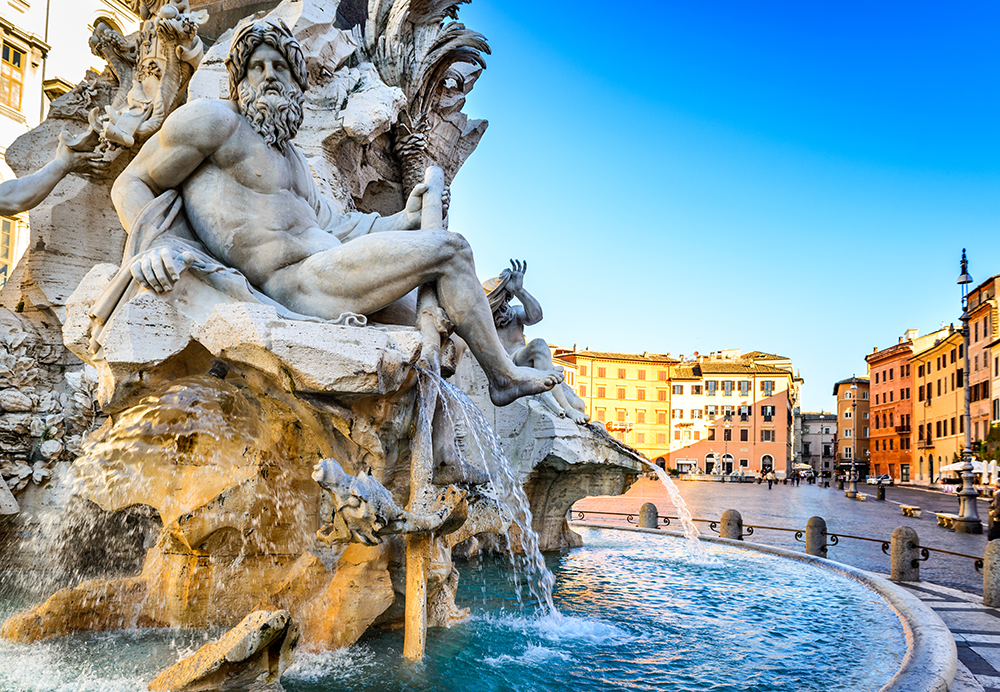
Trevi Fountain: A Baroque masterpiece in the heart of Rome, Trevi Fountain features a sculptural composition depicting Neptune and mythical creatures. Tradition holds that visitors throw coins into the fountain, symbolizing good luck and the hope for a future return to Rome.
The Spanish Steps/Piazza di Spagna: The Spanish Steps, an 18th-century monumental stairway connecting Piazza di Spagna to the Trinità Dei Monti church, serve as a popular meeting place with cultural significance. The steps feature the sculptural masterpiece, “La Barcaccia” by artist Giovanni Lorenzo Bernini. Nearby, the Keats and Shelley House commemorates the lives and works of revered poets, now a museum and library providing insight into their influential figures and the Romantic period.
Villa Borghese Gardens: This expansive public park is renowned for its natural allure, sculptures, and cultural attractions. Originally the private estate of the Borghese family in the 17th century, you’ll discover meticulously landscaped areas, winding paths, museums, and sculptures. Within the gardens lies the Borghese Gallery, displaying an impressive collection of sculptures, paintings, and decorative arts by renowned artists such as Bernini, Caravaggio, Raphael, and Titian.
Piazza del Popolo: The square features an Egyptian obelisk, twin churches, and a central fountain. The open space and architecture, including the Porta del Popolo gate, showcase a harmonious blend of ancient and Renaissance elements. Above the square is a terrace with panoramic views, and nearby is the Santa Maria del Popolo church housing the legendary painting “The Conversion of Saint Paul” by Caravaggio.
Palazzo Doria Pamphilj: This breathtaking historic palace houses a remarkable art collection. Constructed in the 16th century, the palace galleries include a wide variety of art, including paintings, sculptures, furniture, and decorative arts from different periods. Renowned artists such as Caravaggio, Velázquez, Titian, and Bernini are prominently featured in this collection.
Ara Pacis Museum: The Ara Pacis Augustae, commonly known as Ara Pacis, is an ancient Roman altar dedicated to the Roman goddess of peace, Pax. Commissioned by Emperor Augustus and completed in 9 BCE, this monument holds immense artistic and historical importance. The intricate reliefs on the altar depict scenes of Augustan family members, allegorical figures, and mythological themes. It serves as a visual representation of Augustan propaganda advocating peace and stability during his reign.
Spend both nights in Rome.
Day 6: Assisi
Assisi, a UNESCO World Heritage site, is a picturesque hilltop town known for its spiritual importance, medieval architecture, and scenic landscapes. At the heart of the town is the Basilica of Saint Francis, a masterpiece of Gothic and Romanesque art, housing the tomb of Saint Francis. The upper basilica is adorned with breathtaking frescoes by renowned artists such as Giotto and Cimabue. The frescoes depict scenes from the life of Saint Francis and are considered masterpieces of Italian medieval art. The lower church also features impressive wall paintings by artists like Giotto, Simone Martini, and Pietro Lorenzetti and focus on themes related to Jesus’ life.
Assisi’s historic center is a labyrinth of winding streets, medieval buildings, and quaint squares. A visit to the Rocca Maggiore, a fortress with panoramic views of the city and the surrounding countryside, is a highlight. The spiritual ambiance in the Basilica of Santa Chiara, devoted to Saint Clare, extends beyond the basilica itself. Monasteries and hermitages like Eremo delle Carceri, where St. Francis sought solitude, further enrich the town’s atmosphere.
Spend the night in Assisi.
Day 7: Siena
Siena is a charming city, rich in history, exceptional architecture, and vibrant culture. At the heart of the city lies the magnificent Piazza del Campo, a UNESCO World Heritage site renowned for its unique shell-shaped layout, and the impressive Palazzo Pubblico. Don’t miss the famous wall painting by Ambrogio Lorenzetti, “The Allegory of Good and Bad Government” in the Palazzo Pubblico. This masterpiece depicts an allegory of good governance contrasted with bad governance, and it is a must-see.
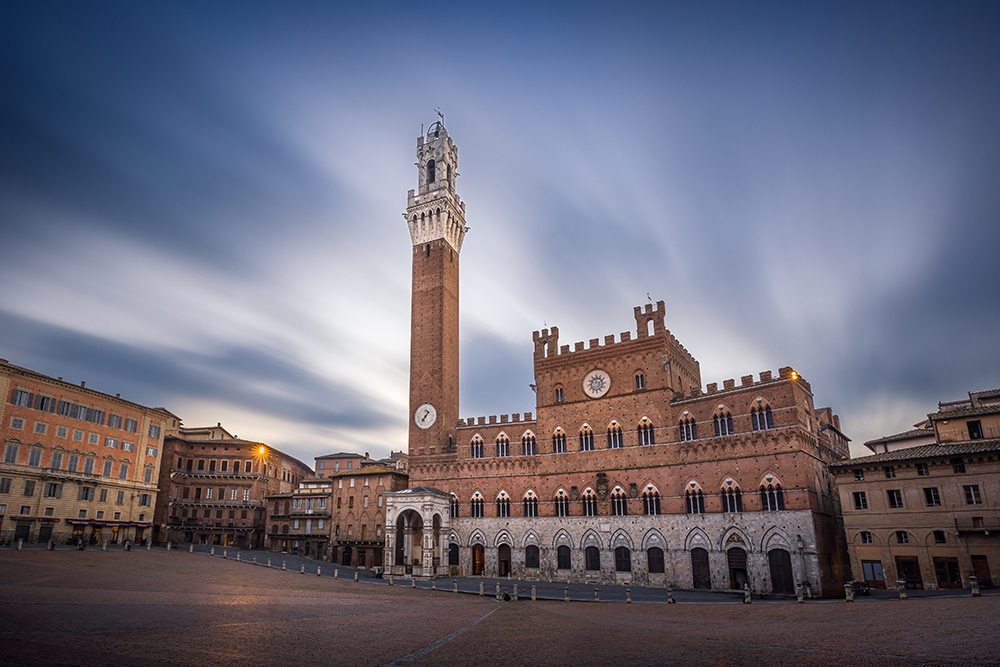
Climb the Torre del Mangia for panoramic views of Siena’s rooftops and the Tuscan countryside. The city is famous for its medieval Gothic architecture, with the Siena Cathedral (Duomo di Siena) standing out as a masterpiece adorned with intricate facades, exquisite marble work, and remarkable frescoes by artists like Michelangelo. In the Baptistery of San Giovanni, there are architectural treasures such as the preacher’s pulpit and the altar.
Spend the night in Siena.
Day 8 and 9: Florence
Florence, or Firenze as it is known in Italian, is the capital of Italy’s Tuscany region and a treasure trove of art, history, and culture, making it one of the world’s most popular tourist cities. The city’s rich heritage is evident in its architecture, museums, and charming streets. A 2-day visit is highly recommended as the city boasts numerous attractions such as the following key points of interest:
The Florence Cathedral (Il Duomo): Santa Maria del Fiore Cathedral, with its iconic red dome designed by Brunelleschi, is a Renaissance architectural marvel. Climb to the top and enjoy a panoramic view of the city. The site also includes the Baptistery with Ghiberti’s “Gates of Paradise” and Giotto’s Bell Tower.
The Uffizi Gallery: This world-renowned museum houses an unparalleled collection of Renaissance art by the world’s most renowned artists. Don’t miss masterpieces such as Botticelli’s “The Birth of Venus” and “Primavera,” Leonardo da Vinci’s “Annunciation” and “Adoration of the Magi,” Raphael’s “Madonna of the Goldfinch,” Titian’s “Venus of Urbino,” and works by Michelangelo and Artemisia Gentileschi.
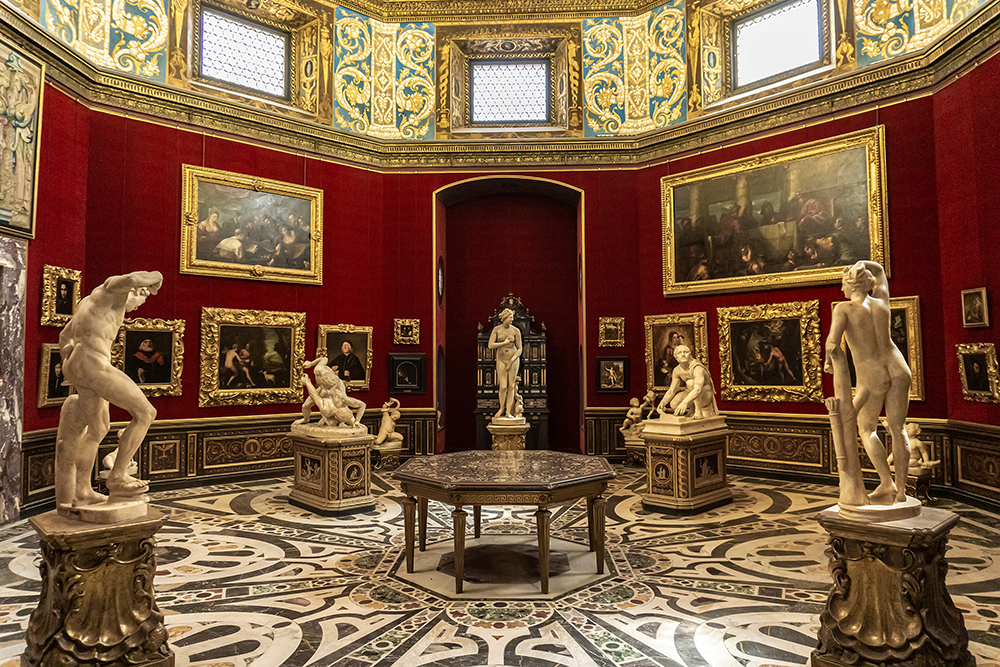
Galleria dell’Accademia: At the heart of the Accademia Gallery stands Michelangelo’s iconic sculpture, “David.” Accompanying this masterpiece are intriguing unfinished sculptures by the artist. The museum also features a collection of historical musical instruments alongside paintings by notable artists from Florence’s Gothic and Renaissance eras.
Ponte Vecchio: This picturesque medieval bridge spanning the Arno River is lined with shops selling jewelry, art, and souvenirs.
Piazza della Signoria: The heart of Florence’s political and social life, this square includes Palazzo Vecchio, sculptures, and the Loggia dei Lanzi, an outdoor sculpture gallery.
Basilica of Santa Croce: The final resting place of Italian cultural giants like Michelangelo and Galileo Galilei, this basilica is a stunning example of Italian Gothic architecture.
Pitti Palace: Formerly the dwelling of the Medici family, Pitti Palace currently houses multiple museums, among them the Palatine Gallery. This gallery exhibits a remarkable assortment of Renaissance paintings by renowned artists such as Raphael and Titian. The royal apartments, adorned with period furniture, provide a glimpse into the lavish lifestyle of the Medici family. The Silver Museum showcases a sophisticated array of decorative arts, including exquisite tableware and jewelry. The Costume Gallery takes visitors on a captivating journey through the evolution of fashion. The expansive Boboli Gardens that surround the palace are an outdoor oasis decorated with carefully designed sculptures, fountains, and lush landscapes.
Florence’s allure extends beyond its iconic landmarks, to the city’s tapestry itself. A leisurely stroll through its narrow streets, sipping espresso at quaint sidewalk cafes, and immersing oneself into its abundant artistic and cultural legacy, create an unforgettable experience for visitors. Don’t miss exploring the vibrant markets, like San Lorenzo Market for exquisite leather goods and Mercato Centrale for a culinary adventure. Florence’s gastronomy is a treat for the taste buds, featuring Tuscan delights like ribollita (bean soup), pappa al pomodoro (tomato and bread soup), and the renowned, unforgettable Florentine steak.
Spend both nights in Florence.
Day 10: Mantua
It’s advisable to park on the north side of the lake and cross the Ponte De San Giorgio Bridge by foot to reach Mantua’s historical center. Explore the well-preserved historic center with its narrow streets, charming squares, and medieval architecture. Discover notable landmarks:
Ducal Palace (Palazzo Ducale): In the “Bridal Chamber,” you’ll see the masterpiece by Andrea Mantegna, featuring rooms with luxurious furniture and works of art providing insight into the daily life of the ruling family.
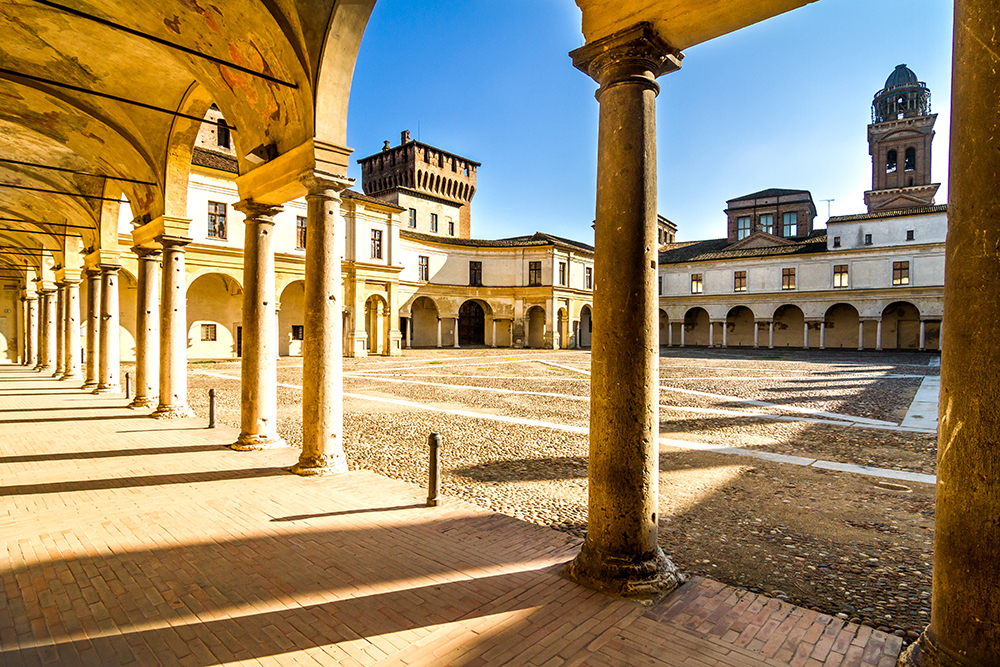
Palazzo Te: The grand palace showcases frescoes like the “Room of the Giants” and the stunning architectural Bibiena Theater, designed in the late 18th century. The theater’s exceptional acoustics, initially used for scientific and experimental performances during the Enlightenment, continue to host various cultural events, concerts, and theatrical performances, making it an important cultural hub in the city.
Mantua Cathedral (Cattedrale di San Pietro): Admire various works of art within the Cathedral, including wall paintings by Giulio Romano and an altarpiece by Peter Paul Rubens.
Spend the night in Venice.
Days 11 and 12: Venice
For the one or two-day excursion in Venice, consider staying in one of the hotels in the neighboring town of Mestre. Use public transportation to reach Venice’s center, or choose the convenience of the Tronchetto car park. From there, embark on a leisurely walking tour or hop onto the city’s water transport lines, for a short journey to capture all the enchanting sites Venice has to offer.
While this short itinerary includes the city’s iconic landmarks, many travelers relish the experience of meandering through the charming streets and canals of the city, affectionately known locally as “La Serenissima,” or “The Serene,” for a magical experience filled with history, art, and culinary delights.
The Grand Canal serves as Venice’s main waterway, lined with splendid palaces, churches, and bridges. A gondola ride along this scenic canal offers a truly unique Venetian experience, allowing you to marvel at the city’s beauty and waterways while soaking in the historical tales of the gondoliers.
Piazza San Marco (St. Mark’s Square) and the Basilica are the heart of Venice. The square is surrounded by impressive landmarks, including St. Mark’s Basilica, adorned with stunning Byzantine mosaics, and the Campanile (bell tower) offering a panoramic view of the city and the lagoon.
Doge’s Palace, an architectural marvel, served as the seat of Venetian rulers, and the Bridge of Sighs (Ponte dei Sospiri), famed for its unusual name, connected the palace to the city’s prisons.
Spanning the Grand Canal, the Rialto Bridge stands as the oldest and most famous bridge in Venice. Nearby, the bustling Rialto Market offers a lively array of fresh produce, seafood, and local products.
For art enthusiasts, a visit to the Gallerie dell’Accademia is recommended, housing an impressive collection of Venetian art, including works by Bellini, Titian, and Tintoretto. The Peggy Guggenheim Collection showcases modern art from the 20th century, featuring pieces by Picasso, Pollock, and Dali.
In the San Polo district, the Scuola Grande di San Rocco, established in the 15th century, is known for its rich history and impressive art collection. Particularly noteworthy is Tintoretto’s extensive cycle of paintings, including “Crucifixion” and “Resurrection,” in the Albergo Hall.
The Santa Maria Gloriosa dei Frari church holds great historical significance in Venice. Founded in the 14th century, it boasts Gothic architecture and an impressive art collection featuring masterpieces by renowned artists such as Titian and Bellini.
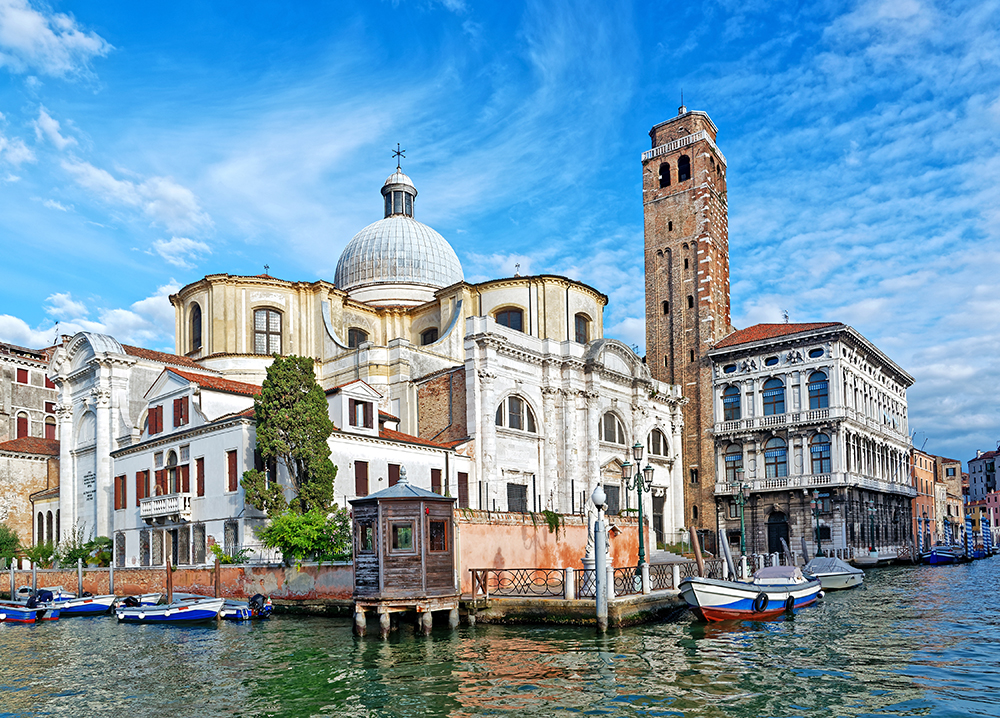
Venice was a vibrant center for music during the Baroque and Renaissance periods, and it was home to renowned composers such as Antonio Vivaldi, Claudio Monteverdi, and Giovanni Gabrieli. Many of these composers worked in Venice, contributing significantly to the city’s musical heritage. Today, the city offers diverse musical experiences, ranging from street performances to church concerts and international shows at the Teatro La Fenice opera house.
To finish off a delightful day, visit the charming island of Burano, accessible by the Vaporetto water bus number 12. Once on the island, wander among its colorful buildings, explore charming lace shops, visit the Lace Museum, and participate in local workshops.
Spend the night in Venice.
Day 13: Verona
We recommend that you park in one of the parking lots near Verona’s train station and embark on a walking tour that includes the following attractions:
Arena di Verona: A Roman amphitheater hosting spectacular opera productions in a historical setting.
Casa di Giulietta (Juliet’s House): A literary landmark known as the setting for Shakespeare’s “Romeo and Juliet,” featuring Juliet’s balcony and its famous sculpture.
Piazza delle Erbe and Piazza Bra: Historic and vibrant squares lined with cafes, market stalls, and historical buildings, perfect for absorbing the local atmosphere.
Arche Scaligere: Gothic-style tombstones adorned with symbolic sculptures, commemorating the power of the Scaliger family.
Museo Archeologico al Teatro Romano: A museum displaying ancient artifacts found in the area, providing insights into Verona’s rich Roman heritage.
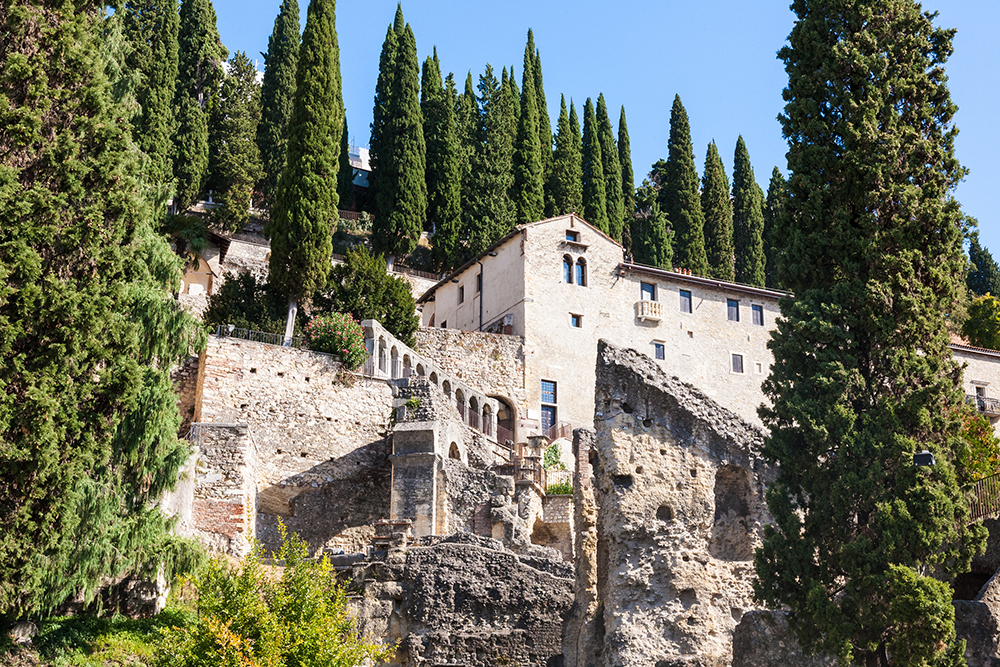
Castelvecchio: A medieval fortress housing an art museum with a collection of sculptures, paintings, and medieval artifacts within an impressive medieval structure. The adjacent Castelvecchio Bridge is renowned for its architectural beauty spanning the Adige River, known for its arches and elegant design.
Roman Theatre: This well-preserved Roman theater, a UNESCO World Heritage site, offers a deeper understanding of Verona’s rich Roman heritage along with a view of the river and city towers.
Spend the night in Verona.
Days 14 and 15: Milan
Milan is a vibrant and cosmopolitan city with a rich history and an abundance of tourist attractions. Here is a selection of the city’s highlights, with a suggested walking route of just over 3 miles. We recommend that you park your car in the area.
Castello Sforzesco: This impressive 15th century fortress was once the residence of the ruling Sforza family. Today, it houses several museums, and, with its vast courtyards, it is a magnificent sight.
Museum of Musical Instruments of Milan: Located within Castello Sforzesco, this museum showcases over 700 musical instruments from the 15th to the 20th century, with a special focus on Lombardian instruments. The collection includes string instruments, violins, horns, various wooden instruments (such as flutes, oboes, clarinets, and English horns), brass instruments, pianos, and ancient bagpipes.
Santa Maria delle Grazie: Visit the church to see Leonardo Da Vinci’s masterpiece, “The Last Supper,” a renowned fresco depicting the biblical scene of Jesus and his disciples during the Last Supper.
San Maurizio al Monastero Maggiore: This historic church is renowned for its stunning wall paintings. Often referred to as the “Sistine Chapel of Milan,” it boasts magnificent Renaissance and Baroque art that showcase Milan’s artistic richness.
Duomo di Milano (Milan Cathedral): This is a breathtaking Gothic cathedral and one of Milan’s landmarks. It boasts magnificent interior spaces as well as panoramic views of the city from its roof.
Galleria Vittorio Emanuele II: This renowned shopping center is famous for its grand architecture, including its glass dome, and exclusive boutiques. The gallery connects the Cathedral Square to Piazza della Scala and La Scala Opera House.
La Scala Opera House (Teatro alla Scala): La Scala, opened in 1778, serving as a focal point for Italian opera and music. The building’s architecture is an architectural gem, known for its neoclassical style and its magnificent interiors. The auditorium, shaped like a horseshoe, is famous for its excellent acoustics, providing an intimate yet fabulous experience for the audience.
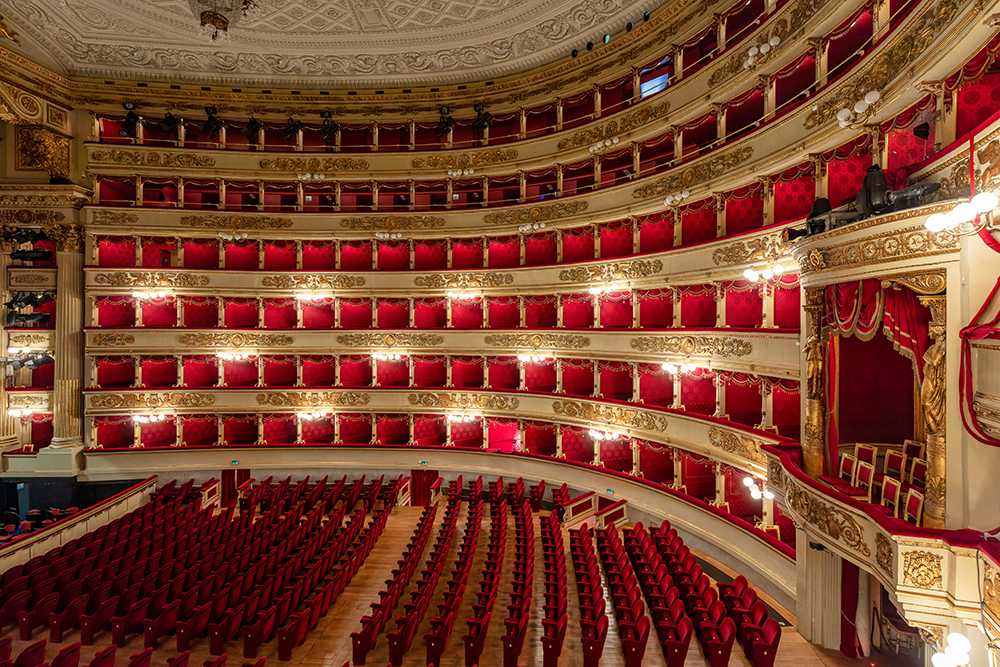
La Scala is renowned for its opera and ballet productions, attracting leading artists, conductors, and directors from around the world. It hosts a variety of performances, from traditional operas to contemporary works and ballet. La Scala is not only a prominent cultural institution in Milan but also an iconic symbol of Italian and global opera and classical music. The opera house continues to significantly impact the world of performing arts. Inside the theater, there is a museum called Museo Teatrale alla Scala, showcasing the history of the theater, its performances, conductors, and various items related to its productions.
Milan is a global center for design, boasting several unique design museums, including the Triennale Design Museum, the ADI Compasso d’Oro Design Museum, which focuses on winners of the prestigious Compasso d’Oro award, highlighting groundbreaking achievements in industrial design. Another noteworthy museum is the Museo Kartell.
Spend both nights in Milan.


